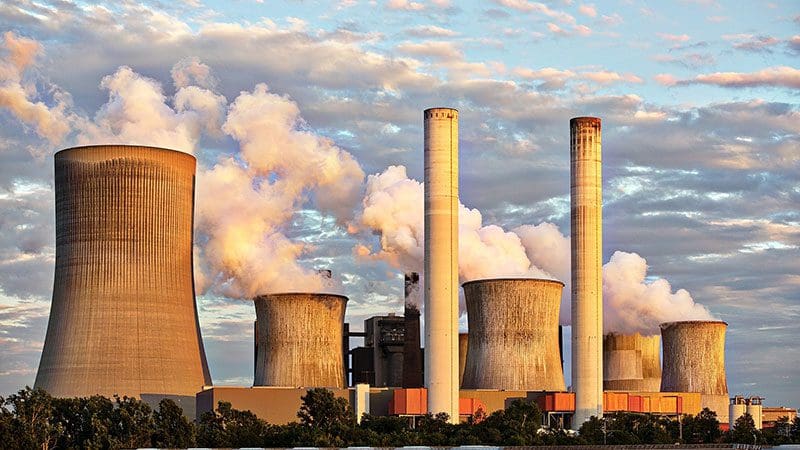Summary of Findings
The National Grid Future Energy Scenarios 2021 (NG’s FES 2021) is a small step forward on their 2020 document. It contains broader, for example considering aviation, shipping and railways (albeit only in terms of emissions, not energy consumption). We agree that “Whole system thinking helps decarbonisation” (p80); indeed, without it, decarbonisation will be unaffordable, impractical, excessively disruptive, unreliable and un-resilient.
Electricity Demand
However the analysis has substantial shortfalls and omissions. In summary, its analysis of the many sources of demand demand:
- Under-estimates future energy demand:
- Until recently the grid accounted for ~¼ of all UK energy use, with the remainder being used by heating, transportation, industry and other sectors:
- Heating will be decarbonised largely by hydrogen (electrolysed using electricity, or chemically formed using electricity) and heat pumps (electricity);
- Transportation will be decarbonised largely by electrification and fuel cells (hydrogen, as above);
- Industry will be decarbonised largely by electrification, hydrogen heating and hydrogen processes;
- Therefore electricity will rise to 75-90% of basic energy supply.
- NG recognises the efficiencies of electricity use (e.g. 4x more efficient vehicle transmissions) without recognising the inefficiencies up-stream (e.g. of storage or electrolysis) or increased utilisation (mileage has consistently risen, even if total transportation fuel consumption has not due to improving vehicle efficiency; with the after-effects of the Coronavirus, an increasing proportion of transportation is personal vehicles, with decreasing public transport usage).
- But every sector considered under-states future demand; for example:
- Consumers are assumed to be unreasonably “prosumers”;
- Digitalisation is assumed to be energy-free;
- Domestic heating rests on highly questionable assumptions of up-take (constrained by space, as much as anything) and efficiency, and ignores that below certain temperatures heat pumps become progressively less efficient until they stop working;
- Transportation relies on excessive EV up-take beyond what the planet’s resources can support, assumes at least 6x over-optimistic V2G support, and ignores ~30% system inefficiencies;
- Industrial and Commercial demand concentrates on making plants and processes more efficient but totally ignores the electricity and hydrogen used in creating environmentally friendly fuels, feedstock materials and hydrogen substitution in processes such as iron and steel making.
- Until recently the grid accounted for ~¼ of all UK energy use, with the remainder being used by heating, transportation, industry and other sectors:
Electricity Supply
The analysis is equally deficient in its analysis of electricity supply: it
- Relies on electricity imports during “times of system stress” (high demand and/or low renewable generation) when most of our neighbours are doing the same concurrently and won’t have a surplus to share;
- Assumes nameplate capacity of all generation (baseload, dispatchable and intermittent), interconnectors and storage;
- Takes output rating of storage regardless of duration, when shorter-duration (sub-4-hour) storage would be exhausted well before the end of an evening peak during times of system stress;
- Over-states distributed and digital solutions’ benefits, which merely redistribute the energy in the system, without ensuring that there is sufficient at all times;
- Does not appear to give full consideration of all aspects of biomass energy;
- Fails to apply a supply margin, whereas grids world-wide consider a margin of 10-15% above peak worst-forecast demand to be a minimum acceptable;
- Therefore under-states the need for storage in general and large-scale, long-duration storage in particular.
Consequences
The result of such predictions, and of regulatory directions, about which Storelectric has repeatedly warned, has been the black-outs of 9th August 2019, numerous near-misses in 2020 and 2021 to date, rocketing costs and complexity of balancing, stability and ancillary services, and a strategy to move faster and further down the same dead end.
The principal views and actions of government, regulator and grid operators have 10-year horizons, and are based on responding to demand. These two factors alone guarantee that the energy transition targets will be missed, and the energy transition itself will be unaffordably expensive and disruptive.
Costs of the Current Strategy
Referring to previous Storelectric studies, the current strategy costs:
- Over £1.25bn one-off plus £125m p.a. unnecessary grid reinforcement, and additional (not evaluated) cost of balancing and stability, per GW additional wind generation;
- Excess reliance on batteries, of which many are needed to deliver the same services as same-sized large-scale long-duration inertial storage like ours, and moreover, for which there is insufficient elementary lithium, cobalt and rare-earth metals in the earth’s crust – ignoring how much smaller a proportion of which is exploitable;
- Excess reliance on imports through interconnectors, which not only will not be available (see above), but also our neighbours will have a political imperative to cut us off during times of system stress;
- Excess costs and difficulty of building and integrating renewable generation;
£328m for 6 years’ synchronous compensation 2020-26 that would be much cheaper if procured from inertial storage with suitable cost-saving revenue stacks; - Complete under-estimate of the need for storage, with
- Excess reliance on Vehicle to Grid (V2G) and shared mobility.
- In short, it subscribes to most of the fads and fallacies of the energy transition.
Energy Storage and Flexibility
As a result of all these dreadful errors, storage capacity (excluding the grossly over-estimated V2G) is forecast at 28-43GW. While this looks substantial, this is only nameplate capacity and doesn’t even consider the essential measure of duration. Indeed, most of the discussion is about batteries, which cannot cost-effectively scale up in this way. Nor do the batteries provide the other services that inertial storage does: up to 6 batteries are needed to provide the entire range of services that a single inertial storage facility can deliver concurrently from a single same-sized unit. Not to mention that there are not enough resources in the earth’s crust to build them. Batteries are indeed an unaffordable and inadequate option.
The report does mention longer-duration storage, notably pumped hydro, but offers no way in which it will be incentivised: there are no such projects on the table that were not on the table a decade ago, and they have not proceeded due to systemic regulatory and contractual problems addressed elsewhere in this analysis. And CAES, the most cost-effective of the lot, is not even mentioned – solely because the ministry, regulator and grid have not enabled a first-of-a-kind to be built.
The discussion on flexibility perpetuates the insistent misunderstanding of a 2012 Imperial College report which said not to talk about storage, but about flexibility and duration, stating that “Resource adequacy requires several hours of storage duration, if peaking generation is to be displaced securely, based on the shape of the demand profile derived for 2030.” What is the point of flexibility if it is exhausted part-way through need, such as after sunset on a windless winter evening, when it’s needed through the entire evening peak and even overnight? Flexibility must never be discussed without duration, however much reports such as this insist on doing so.
How Much Storage Is Needed?
By coincidence, the UK electricity system’s required supply margin is roughly equal to the expected zero-carbon dispatchable and baseload generation (e.g. nuclear, biomass, BECCS but ignoring gas + CCS). By a simple but rigorous calculation of the need for storage, the gigawatts of storage required is therefore roughly equal to peak demand, which ranges from 92.4GW to 113GW (the low figure is the Steady Progression scenario, which is close to Leading the Way; the high figure is Consumer Transformation).
As the zero-carbon generation is likely to be prioritised, and the storage kept in reserve, the duration of storage required is equal to all demand over the longest period (2 weeks) of low-renewable generation, which coincides with extreme demand that will be increasingly extreme for electricity as heating is decarbonised, minus the output during that period of zero-carbon generation, plus a reserve, which we estimate at 46-69TWh, based on National Grid’s forecast demand in their three Net Zero compliant scenarios.
Digitalisation and Markets
Digitalisation (if you’ll excuse the poor grammar: it’s a mistake coined in Brussels for digitisation) is put forward as a panacea. As well as grossly over-estimating its benefits (see above, Prosumers, the Majority, and Aggregators), it is seen as a very broad panacea. But digitisation only optimises the energy in the system, with limited movements in location and time; it does not create new energy. If there isn’t enough, there just isn’t enough – however well it’s optimised.
“To deliver higher levels of flexibility, we need sharper market signals to incentivise the right outcomes.” Correct. So why are the ministry, regulator and grid operators so focused on destroying market signals?
- The cost of electricity is an ever-decreasing ~30% share of the price of electricity;
- Price caps on consumer bills reduce market signals;
- Promoting ever more extreme forms of DSR and V2G, and salami-slicing that incentivises narrowly capable plants like batteries, creams off the higher-value revenue streams that are needed to pay for longer-duration storage, and therefore increases total system costs because the longer-duration storage is still needed and so must put up its prices for what these other sources cannot provide;
- Short-duration contracts prevent new plants being built, as only sweated assets can compete.
Recommendations
Apart from a recognition of the above problems, and policies to suit, Storelectric recommends a new approach to regulation and contracting electricity which will, within the price paid (and therefore without need for special financial instruments = market distortions and subsidies), incentivise:
- Minimise total system costs, both capital and ongoing;
- Investment for the long term, including in large-scale flexible technologies;
- Enable large-scale flexible technologies to compete;
- Incentivise cleanness of all technologies without a penny spent on doing so;
- Incentivise the introduction of new technologies, again without a penny spent;
- Make the grid once more one of the world’s most reliable, resilient and affordable.
This needs to be matched by other regulatory overhauls such as:
A correct regulatory definition of storage;
- Enabling long-term contracts;
- Contracts to cover multiple revenue streams, not just from the System Operator but also the
- Transmission Operator where a project will benefit both;
- Enabling projects’ benefits to be evaluated and rewarded on their own merits rather than destroying developers’ incentives by artificially competing each developer’s best ideas14;
- Revising the OFTO regime to enable offshore energy generators to benefit from onshore investment in relation to both new and existing installations14.


